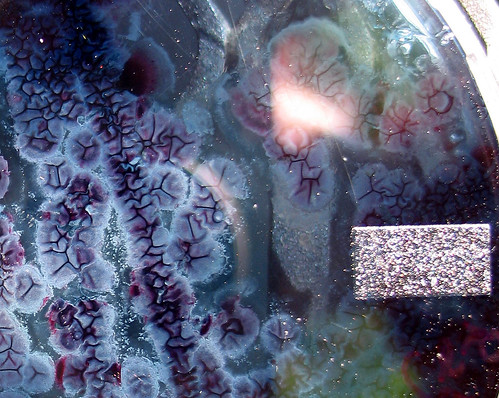The human body contains about 100 trillion cells, but only maybe one in 10 of those cells is actually human. The rest are from bacteria, viruses and other microorganisms.
The human we see in the mirror is made up of more microbes than human.
NPR reporter Rob Stein and Lita Proctor of the National Institutes of Health
So began the radio report on the results of the Human Microbiome Project the first catalog of the bacteria, viruses and other microorganisms that populate every nook and cranny of the human body as reported by 200 scientists in some sixteen articles published in four journals.
The definition of a human microbiome is all the microbial microbes that live in and on our bodies, all the genes, and all the metabolic capabilities these microbes bring to supporting human health and also human disease. The scientists had taken samples from 200 healthy adults in 18 different sites both on and in the body.
The factoids of the findings are truly amazing:
10,000 different species annotated, 8 million different genes, that’s 300 times the number of human genes by the Human Genome Project.
There were discoveries of entirely new species which have the scientists speaking in terms of opening new territory – a rainforest with new butterflies or mammals… except they’re speaking of bacteria. Those foreign little buggers that we mostly try to sanitize away.
Well, all this info, however stunning in the moment (and I got very excited yesterday), isn’t all that new. Because, you see, the symbiosis in the human body is actually quite fractal, the pattern repeating on different levels, in different ways on subtler, more microscopic levels.
I think of Evie fighting cancer. Well, actually her Hodgkins tumors are composed of only about 10% cancerous cells. The cancerous Reed-Sternberg cells recruit a host of immune cells that symbiotically support the cancer. And in turn within each of these human cells, both benign and malignant, respiration occurs in small organelles – the mitochondria – that are descendents of swallowed-up bacteria that symbiotically created the cells we know today as "human".
When I discovered this fact about mitochondria back in 1969, I shivered with a thrill. I’ve quoted Lewis Thomas before because the impact went so deeply into me and he expresses his own feelings that so well echo mine:
there is the whole question of my identity… It is a mystery.
There they are, moving about in my cytoplasm, breathing for my own flesh, but strangers. They are much less closely related to me than to each other and to the free-living bacteria out under the hill. They feel like strangers, but the thought comes that the same creatures, precisely the same, are out there in the cells of sea gulls and whales, and dune grass, and seaweed, and hermit crabs... Through them, I am connected… This is a new kind of information, for me.
Lewis Thomas
And, I guess until a deeply non-dual awareness is established, I shall continue to be shaken to my core by such incontrovertible evidence that the boundaries I draw around myself are actually quite arbitrary and ultimately rather artificial.
It seems that experience is a very dualistic affair. Experience, we are taught early in life, has a personal inner observer who gets in touch with outer objects through the means of the senses, and communicates through language to other inner observers. There is an impassible barrier, we are taught, between in and out. …
This subject /object duality is perhaps the most fundamental duality of all. How you see yourself affects how you see the object of your experience. “What you be” determines what you see.
Greg Goode, How to Stand as Awareness
Thursday, June 14, 2012
The Human Microbiome
Labels:
Greg Good,
gut flora,
Lewis Thomas,
microbiome,
mitochondria,
non-duality,
nondual awareness
Subscribe to:
Post Comments (Atom)


No comments:
Post a Comment